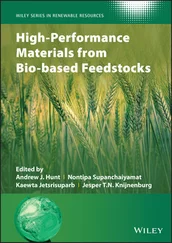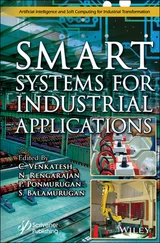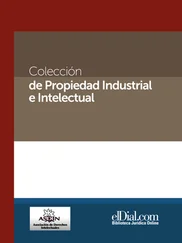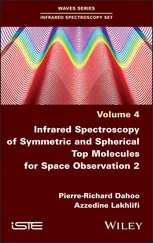126 126 Pielesz, A. and Paluch, J. (2014). Fucoidan as an inhibitor of thermally induced collagen glycation examined by acetate electrophoresis. Electrophoresis 35 (15): 2237–2244.
127 127 Fujimura, T., Tsukahara, K., Moriwaki, S. et al. (2000). Effects of natural product extract on contraction and mechanical properties of fibroblast populated collagen gel. Biological & Pharmaceutical Bulletin 23 (3): 291–297.
128 128 Smit, N., Vicanova, J., and Pavel, S. (2009). The hunt for natural skin whitening agents. International Journal of Molecular Sciences 10 (12): 5326–5349.
129 129 Jesumani, V., Du, H., Pei, P. et al. (2020). Comparative study on skin protection activity of polyphenol‐rich extract and polysaccharide‐rich extract from Sargassum vachellianum. PLoS One 15 (1): e0227308.
130 130 Bagal Kestwal, D.R., Pan, M.H., and Chiang, B.‐H. (2019). Properties and applications of gelatin, pectin, and carrageenan gels. In: Bio Monomers for Green Polymeric Composite Materials (eds. P. Visakh, O. Bayraktar and G. Menon), 117–140. Wiley. https://doi.org/10.1002/9781119301714.ch6.
131 131 Kozlowska, J., Pauter, K., and Sionkowska, A. (2018). Carrageenan‐based hydrogels: effect of sorbitol and glycerin on the stability, swelling and mechanical properties. Polymer Testing 67: 7–11.
132 132 Thevanayagam, H., Mohamed, S.M., and Chu, W.‐L. (2014). Assessment of UVB‐photoprotective and antioxidative activities of carrageenan in keratinocytes. Journal of Applied Phycology 26 (4): 1813–1821.
133 133 Ariga, O., Okamoto, N., Harimoto, N., and Nakasaki, K. (2014). Purification and characterization of α‐neoagarooligosaccharide hydrolase from Cellvibrio sp. OA‐2007. Journal of Microbiology and Biotechnology 24 (1): 48–51. https://doi.org/10.4014/jmb.1307.07018.
134 134 Chen, H.‐M. and Yan, X.‐J. (2005). Antioxidant activities of agaro‐oligosaccharides with different degrees of polymerization in the cell‐based system. Biochimica et Biophysica Acta 1722 (1): 103–111.
135 135 Orive, G., Hernández, R.M., Gascón, A.R., and Pedraz, J.L. (2006). Encapsulation of cells in alginate gels. In: Immobilization of Enzymes and Cells (ed. J.M. Guisan), 345–355. Humana Press.
136 136 Aderibigbe, B.A. and Buyana, B. (2018). Alginate in wound dressings. Pharmaceutics 10 (2).
137 137 Dantas, M.D.M., Cavalcante, D.R.R., Araújo, F.E.N. et al. (2011). Improvement of dermal burn healing by combining sodium alginate/chitosan‐based films and low level laser therapy. Journal of Photochemistry and Photobiology. B, Biology 105 (1): 51–59.
138 138 Huang, S. and Fu, X. (2010). Naturally derived materials‐based cell and drug delivery systems in skin regeneration. Journal of Controlled Release: Official Journal of the Controlled Release Society 142 (2): 149–159.
139 139 Sathasivam, R. and Ki, J.‐S. (2018). A review of the biological activities of microalgal carotenoids and their potential use in healthcare and cosmetic industries. Marine Drugs 16 (1).
140 140 Benedetti, S., Benvenuti, F., Pagliarani, S. et al. (2004). Antioxidant properties of a novel phycocyanin extract from the blue‐green alga Aphanizomenon flos‐aquae. Life Sciences 75 (19): 2353–2362.
141 141 Cikoš, A.‐M., Jerković, I., Molnar, M. et al. (2019). New trends for macroalgal natural products applications. Natural Product Research 0 (0): 1–12.
142 142 Sonani, R.R., Rastogi, R.P., Singh, N.K. et al. (2017). Phycoerythrin averts intracellular ROS generation and physiological functional decline in eukaryotes under oxidative stress. Protoplasma 254 (2): 849–862.
143 143 Varela, J.C., Pereira, H., Vila, M., and León, R. (2015). Production of carotenoids by microalgae: achievements and challenges. Photosynthesis Research 125 (3): 423–436.
144 144 Esatbeyoglu, T. and Rimbach, G. (2017). Canthaxanthin: from molecule to function. Molecular Nutrition & Food Research 61 (6).
145 145 Koller, M., Muhr, A., and Braunegg, G. (2014). Microalgae as versatile cellular factories for valued products. Algal Research 6: 52–63.
146 146 Camera, E., Mastrofrancesco, A., Fabbri, C. et al. (2009). Astaxanthin, canthaxanthin and beta‐carotene differently affect UVA‐induced oxidative damage and expression of oxidative stress‐responsive enzymes. Experimental Dermatology 18 (3): 222–231.
147 147 Tominaga, K., Hongo, N., Karato, M., and Yamashita, E. (2012). Cosmetic benefits of astaxanthin on humans subjects. Acta Biochimica Polonica 59 (1): 43–47.
148 148 Shen, C.‐T., Chen, P.‐Y., Wu, J.‐J. et al. (2011). Purification of algal anti‐tyrosinase zeaxanthin from Nannochloropsis oculata using supercritical anti‐solvent precipitation. The Journal of Supercritical Fluids 55 (3): 955–962.
149 149 Juturu, V., Bowman, J.P., and Deshpande, J. (2016). Overall skin tone and skin‐lightening‐improving effects with oral supplementation of lutein and zeaxanthin isomers: a double‐blind, placebo‐controlled clinical trial. Clinical, Cosmetic and Investigational Dermatology 9: 325–332.
150 150 Kim, H.‐M., Jung, J.H., Kim, J.Y. et al. (2019). The protective effect of Violaxanthin from Nannochloropsis oceanica against ultraviolet b‐induced damage in normal human dermal fibroblasts. Photochemistry and Photobiology 95 (2): 595–604.
151 151 Inoue, N., Yamano, N., Sakata, K. et al. The Sulfated Polysaccharide Porphyran Reduces Apolipoprotein B100 Secretion and Lipid Synthesis in HepG2 Cells. Bioscience, Biotechnology, and Biochemistry 73 (2): 447–449. https://doi.org/10.1271/bbb.80688. (23 February 2009).
Конец ознакомительного фрагмента.
Текст предоставлен ООО «ЛитРес».
Прочитайте эту книгу целиком, купив полную легальную версию на ЛитРес.
Безопасно оплатить книгу можно банковской картой Visa, MasterCard, Maestro, со счета мобильного телефона, с платежного терминала, в салоне МТС или Связной, через PayPal, WebMoney, Яндекс.Деньги, QIWI Кошелек, бонусными картами или другим удобным Вам способом.











